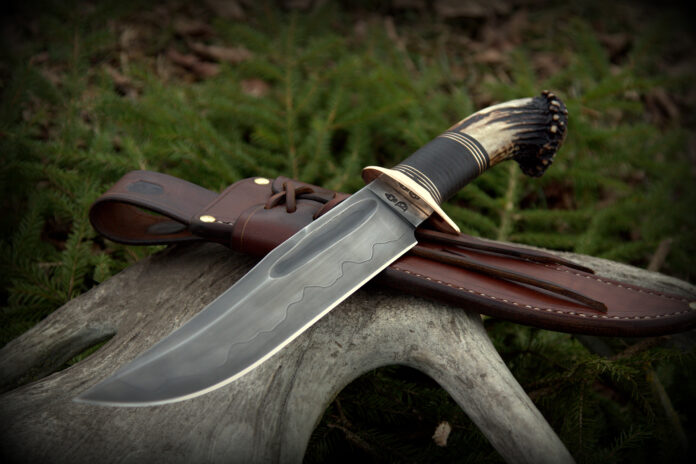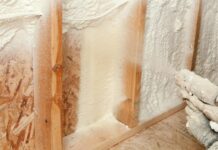Damascus knives include the handmade bowie knife, whose traditional origin is the Middle East. They’re renowned for their sharpness and edge retention, so much so that the US Army utilized them during World War II. They’re also highly sought after and valuable, requiring much care and attention to keep them working well. If you’re reading this, there’s a good chance that your Damascus knife is looking worn and rusty. It would be best if you took care of it, or it may not have long to live. Below, you’ll learn how to care for your Damascus knife so that it stays sharp, and you can use it for years to come.
Washing Your Knife
New owners of Damascus blades are often anxious about cleaning their blades. Caring for these knives is as simple as rinsing them under running water, drying them with a wash sponge moistened with some liquid detergent, rinsing them again, and then wiping them dry.
Lubrication Of Carbon Steel Damascus Knives
Note that blade makers cast the entire blades in Damascus. Therefore, the pattern and design run continuously from one end to the other. During the manufacturing process, you can see the distinct way of the steel only after etching and acid treatment. Due to etching, the blade has both dark oxidized and bright shiny areas, resistant depending on the degree of oxidation.
In the process of making Damascus blades, manufacturers use high-carbon steel. This type of steel has a relatively low chromium content compared to other kinds of steel. Remember that carbon steel and Damascus steel are susceptible to rust if not correctly maintained. To avoid discoloration or rust on your blade, ensure it’s always dry and clean.
After thoroughly cleaning and drying your knife, you should lubricate it with wax to prevent moisture from attacking the blade. Check with your supplier for the best quality wax. Most suppliers recommend museum-quality archival wax.
In addition, manufacturers sometimes use stainless steel when making Damascus blades. According to specifications, knives made of steel with a chromium content of at least eleven percent exemplify stainless knife products. Even though stainless Damascus steel is corrosion resistant and easy to maintain, you should protect it with wax to keep it durable.
Do Not Use Abrasives
Metal cleaners and abrasives can remove the etched oxidation that your Damascus knife needs to maintain its design pattern. Therefore, avoid using abrasives such as metal polishes, rough fabrics, steel wool, or similar products. If the etching on your knife changes significantly, you should return the blade to a manufacturer to professionally re-etch it.
Use your Damascus Knife Correctly
If you use the Damascus blade for acidic foods, such as fruit, in rainy or humid situations or for dressing animals outdoors, you’re exposing it to damage. These elegant blades have carbon steel, so the above applications and settings can wear down their engraving.
When you decide to use your Damascus knife, wash and dry the blade promptly, being especially careful not to wipe it too hard. If you dry the edge with a cotton or microfiber cloth, the soft fabric won’t wear down the blade as it would with a paper towel.
Keep Your Damascus Knife Safely To Avoid Corrosion
It’s best to keep your Damascus knife in a dry, closed room when you aren’t using it. Doing so prevents your blade from getting damages that may result from excessive moisture or temperature fluctuations. The knife will stay in good condition if you clean it thoroughly, polish it, and then store it in a padded sheath or box with a zipper.
When outdoors with your knife, be careful not to leave it in damp spaces for too long. It will help keep your blade in good condition. It is also not a good idea to keep your Damascus blade or other knives in a leather sheath, as acids or chemicals previously applied by manufacturers in the tanning process can cause the leather to oxidize after some time because of regular moisture.
Also, be on the lookout for damp handles. Remember that moisture from the handle can also cause your blade to rust. That’s why it’s essential to keep the entire knife dry. If you keep Damascus knives with natural handle parts, you should refrain from using a dehumidifier; keeping them in a locked safe or storage room is especially important. Natural handle parts such as deer and wood are susceptible to damage from very low humidity, which can cause cracking or rotting. In contrast, synthetic materials on knife handles never sustain moisture damage.
Refreshing The Pattern Of Your Knife
It is normal for the Damascus pattern on your product to lose clarity over time. Fortunately, this problem is easy to fix. Here you will learn how to proceed;
- Prepare a pot of cheap and extremely bitter instant black coffee and brew it all through. You will need a lot of coffee where for your to submerge.
- Once you have washed your blade, use methylated spirits to completely clean the blade and remove any oils or other contaminants.
- Place the blade in instant coffee and reheat as necessary. Be especially careful not to let the coffee spill over the handle.
- Remove the blade from the coffee every fifteen minutes to check it. Do not touch or wipe the blade at any time. Instead, wait fifteen minutes and an hour for the process to complete.
- When you have achieved your desired effect, remove the blade from the coffee and clean it as usual before oiling it and putting it away.
Blades from Damascus steel deteriorate with humidity, similar to blades with carbon steel. Both blades require similar care. Once your blade has developed a patina, it becomes more forgiving. On the other hand, a new carbon steel blade can immediately begin to rust when you expose it to elements. Fortunately, you can take care of your Damascus steel knife with the steps above so that it lasts longer and retains its distinctive look.
































